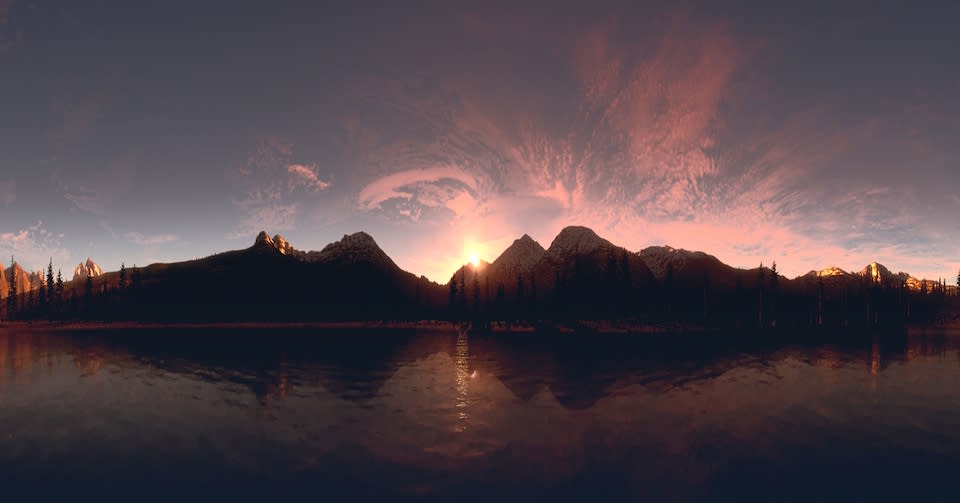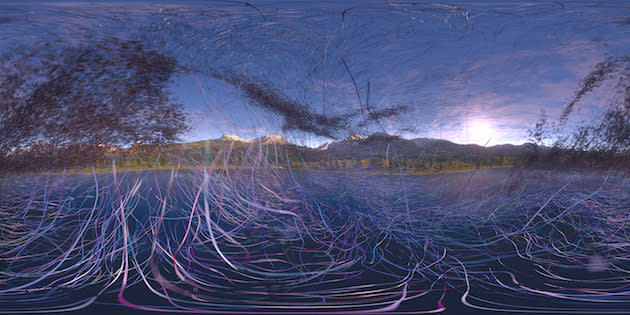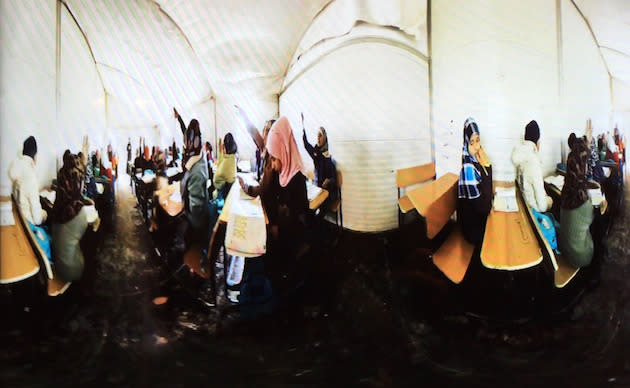VRSE readies a production farm for experimental VR works

Virtual reality is in the midst of an ongoing renaissance, sparking incredible interest from all along the spectrum, including tech giants like Facebook, young startups, big movie studios and independent filmmakers. With that in mind, VRSE, a new production company in the VR space, has taken to Sundance 2015 to reveal its big ambitions for this immersive technology. And it all starts with Evolution of Verse, a 3.5-minute short film featuring a computer-generated landscape setting and other visual effects that are designed to push the envelope of virtual reality.
Over the past couple of days in Utah, I've been asked several times: "What does virtual reality have to do with Sundance?" Granted, that was brought up by people who don't necessarily keep up with the technology and film industries. Still, the question isn't without merit. To a certain degree though, this year's New Frontier event, an exhibit for creators to feature unordinary storytelling during the festival, is where you'll find the answer to that inquiry. It was there that platforms like the Oculus Rift were born, while more recently, works like Birdly, a virtual reality flight simulator, look to reach new audiences and showcase how science can interact with technology. With its VR experiments, VRSE hopes to make a big impact in the burgeoning space.

VRSE was formed by artist and filmmaker Chris Milk, who has directed videos for musicians such as Kanye West, Beck and Arcade Fire. In all, it consists of VRSE.works (production), VRSE.farms (storytelling) and VRSE.tools (hardware), with the focus expected to be completely on making virtual reality experiences. As part of these efforts, VRSE teamed up with Digital Domain, a visual effects juggernaut in Hollywood, to create Evolution of Verse, the young company's first VR project. I had the chance to watch it here at Sundance, where it made its public debut this week, and it was a strikingly beautiful thing to see. The film, which was being screened on Samsung Gear VR and Google Cardboard headsets, manages to look real enough that you wouldn't know it's a world of visual effects. "Chris wanted to do something that has never been done before with CGI (computer-generated imagery," said Samantha Storr, Executive Producer at VRSE.works.
The story starts off with a beautiful sunrise scene, but that's quickly followed by a train steaming toward you at full speed, just as you're calmly and effortlessly walking on water. Shortly thereafter, the train, which appears to be from the 1800s, crashes on your face and causes a vivid explosion that bursts into thousands of dark-hued birds -- all flying fiercely across your field of vision. It's a chilling, somewhat frightening way to enter into Evolution of Verse, but those few seconds alone set the tone for the rest of the film.
At one point, you can look up and get sucked into a colorful spiral, which then takes you into a womb, where the shot pans across the head of a baby, still unborn. The umbilical cord is attached; a blue LED, embedded underneath the skin of the baby's forehead, slowly blinks. Finally, the baby reaches a hand out to you and the story ends. The first time I was given a demo of the film, I completely missed out on taking the visual trip down the spiral, namely because I didn't position my head in the right direction to let the motion tracking initiate the wandering I was meant to encounter. All in all, the experience is visually stunning and vivid, thanks in large part to the high quality of the graphics and sound effects.
"What's interesting about VR is that you have something in front of your eyes and ears. It's in its infancy right now and we're ready to start experimenting."
Milk, who wrote and directed Evolution of Verse, says the short film is about "new beginnings and rebirth," but he wants people to interpret the journey in their own way. "Technology can turn us all into gods; make of that what you will," he says, emphasizing that being able to experiment with stories like this is what's great about virtual reality. As for how far he thinks the technology can go, Milk says, "You look at where cinema is today, and the technology didn't evolve that much. You had color, sound and CGI." He adds, "What's interesting about VR is that you have something in front of your eyes and ears. It's in its infancy right now and we're ready to start experimenting."

A shot from Clouds Over Sidra, a VRSE virtual reality documentary.
The project is the first to stem from VRSE's partnership with Annapurna Pictures, the production firm behind films such as American Hustle, Foxcatcher, Spring Breakers and Zero Dark Thirty. Beyond this, Milk says his goal with VRSE is to come up with more compelling experiences for viewers, noting that there's an excitement about the opportunity to do that in a growing medium like VR. "You can make an experience that looks like reality, but transcendent," he said. "Where VR ultimately goes is where your brain can't tell a difference. No weird thing on your face, no pixels."
Along with Evolution of Verse, VRSE also introduced two other VR projects at Sundance. There's Vice News VR: Millions March NYC 2014, which is being touted as the first-ever virtual reality news broadcast; and Clouds Over Sidra, the story of a 12-year-old girl who lived in a Syrian refugee camp for 18 months.
Ultimately, for Milk and his VRSE venture, the key is to figure out what the language of storytelling in VR is. "It's not a just a movie anymore; it's completely different."
[Image credits: VRSE.works]

